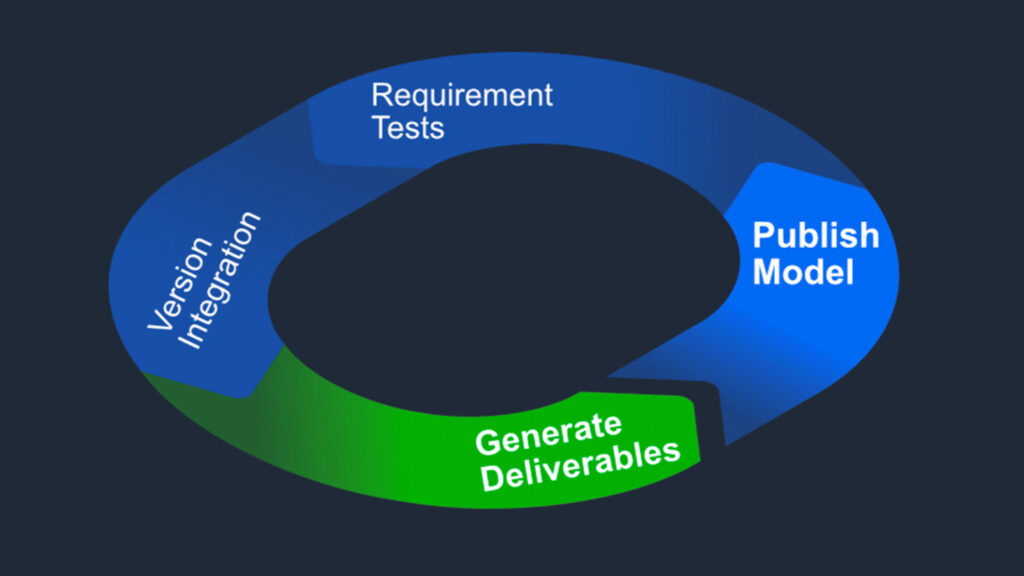Speckle Automate brings automation to open-source AEC platform
On the pathway to BIM, AEC data flows managed to get well and truly broken. This is not ideal in a world where collaboration and interoperability are paramount. Speckle started out as a geeky product, developed by hackers in the AEC industry who wanted to overcome such issues as sharing models with others, viewing them online and querying BIM data outside of proprietary applications. It has ended up becoming an open-source, professional platform providing interoperability and real time collaboration for a growing community of users and developers. The company’s recent online conference, Speckle Con, introduced a new powerful Automation capability called Speckle Automate which will be in beta soon.
Up to this point, Speckle has been seen as a platform and toolkit which provides connectors to extract AEC data for siloed applications. It ‘atomises’ the data and geometry (making what’s commonly called granular data) then allows everything to be shared with a totally different Speckle-enabled application – such as Revit to Catia, or Civil 3D to Rhino. Speckle is now going to build in simple-to-use automation for firms to build workflows where chains of functions, from all manner of tools, can carry out processes to Speckle data.
“With Speckle we’ve built an object-based data layer for essentially 3D data and BIM models,” says Dimitri Stefanescu, founder and CEO of Speckle. “We essentially decompose all 3D models into sub-constituent atoms and store them in a database, make them available to Speckle clients and to scripts.
“The first value proposition of Speckle is multiplayer connectivity, our aim here is to enable interoperability and meaningful workflows between people. Then there’s collaboration, again, with the focus on people. We’re giving customers a new way to experience and engage with their projects.
“After this, we asked ourselves, ‘What if we were to enable multiplayer collaboration with scripts and machines?’ As developers, we do want to bring back essentially developer tooling productivity to AEC and the world of 3D. And this is why, essentially, we’ve introduced Automate.
“What it does is on every model change inside Speckle, you will have workflows running, automatically. This means essentially, no more manual labour. You can write the script once and automate the boring stuff away.
“All this integrated within one platform – Speckle – so we’re opening a whole new category when it comes to data within AEC, which kind of wraps up together into one lovely package, collaboration, connectivity, and automation.”
Find this article plus many more in the November / December 2023 Edition of AEC Magazine
👉 Subscribe FREE here 👈
Automate is an iterative tool designed for developers, engineers, and architects. It allows workflows to run automatically after every model change in Speckle, removing the need for manual intervention.
Speckle describes Automate as a CI/CD solution, offering Continuous Integration (CI) and Continuous Delivery (CD). When changes are made to a BIM model this can now trigger quality assurance checks, code compliance, integrity checks, logical analyses, and clash detection, from any application, through any API, within your Speckle network or tech stack. It can also automate the generation of deliverables, reports, drawings, statistical analysis, and schematic diagrams. This technology could fundamentally change the way tech stacks are integrated, as well as providing obvious productivity boosts.
Current automation technologies require expert knowledge and resources to host, package, and maintain. Speckle Automate is designed to reduce the knowledge and resource overhead. It aims to make automation more accessible to all in the AEC industry and start to bring some of the ‘headless’ variants of applications into use, such as Blender and Rhino.
Automate can talk to ‘any API’, be that Office 365, content management systems, Slack, Microsoft Teams, messaging services, or emails. It can even connect to a machine learning or artificial intelligence platform of choice. The possibilities appear pretty endless.
“With current automation technology, you not only have to code your application, you have to compile it, package it, host it, run it, secure it maintain it, it’s a huge burden. It requires expert knowledge,” says Ian Sproat, platform engineer, Speckle. “It’s not likely our clients’ core competency, and this all needs dedication and needs resources.
“While there are many generic tools out there that do CI/CD, they’re not AEC-specific, and are not built on top of Speckle. We wanted to build something accessible, especially for those that don’t code and those who wish to share their expertise. They might be developers, computational designers, but also other experts within companies.”
With Automate, the idea is that Speckle customers are no longer constrained to a particular machine or application on somebody’s desktop in an office. They can now run the same workflow processes for Revit models, SketchUp models, Archicad models, IFC files, or any other software that can send data to Speckle. The results can be viewed in your application of choice.
As soon as a model is updated, the process, such as an analysis, will automatically run again and can save files alongside the data, such as a PDF or Word Doc report. These can also be shared throughout Speckle networks. There are several starter templates available to help kick off customers.
A demonstration of Speckle Automate from Speckle Con 2023 can be seen below. All the videos from Speckle Con can be seen here.
Meanwhile, see Jonathon Broughton of Speckle present at AEC Magazine’s NXT DEV 2023 event, along with all the other presentations.
Sign up for the Speckle Automate beta here.






